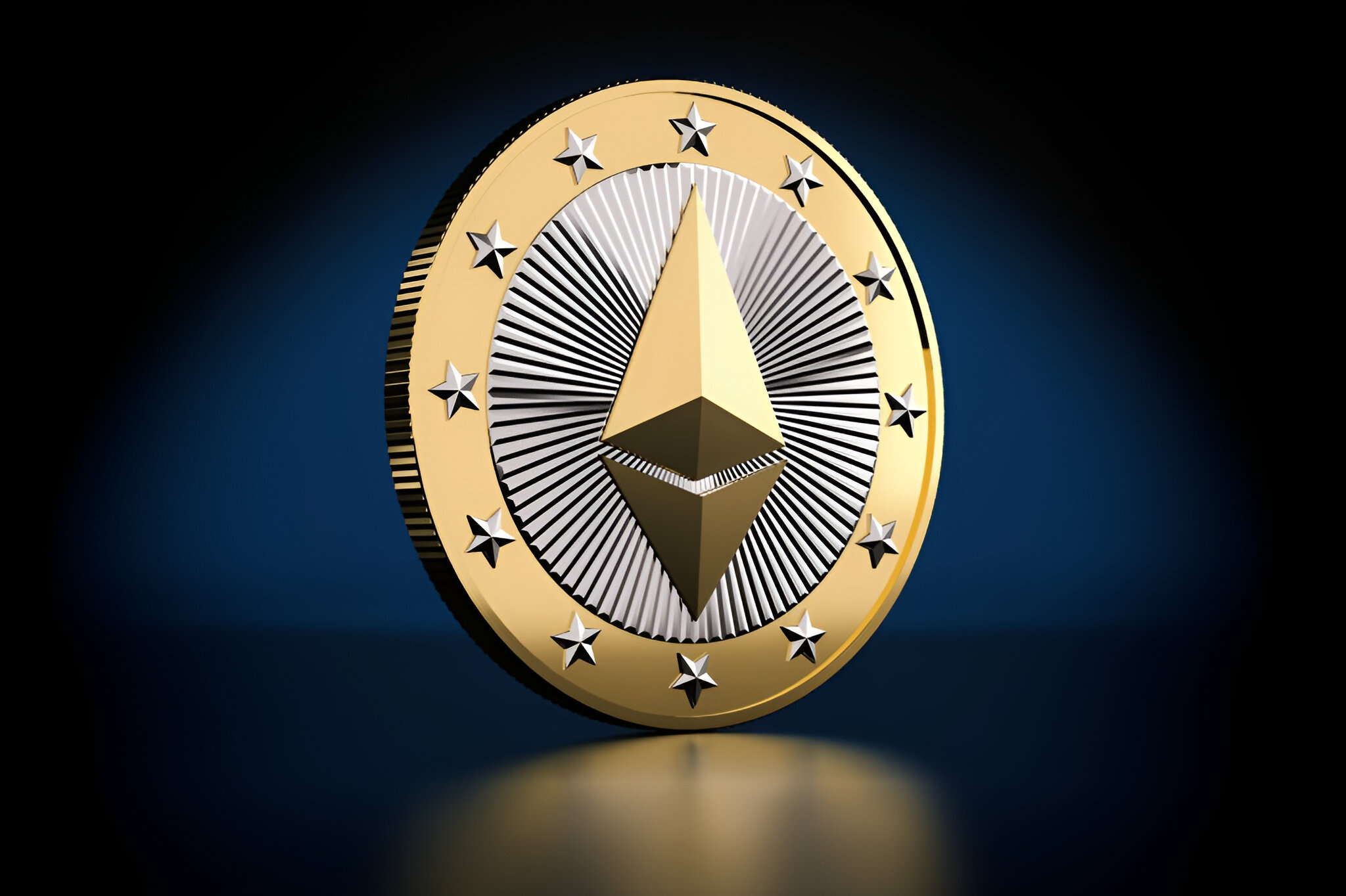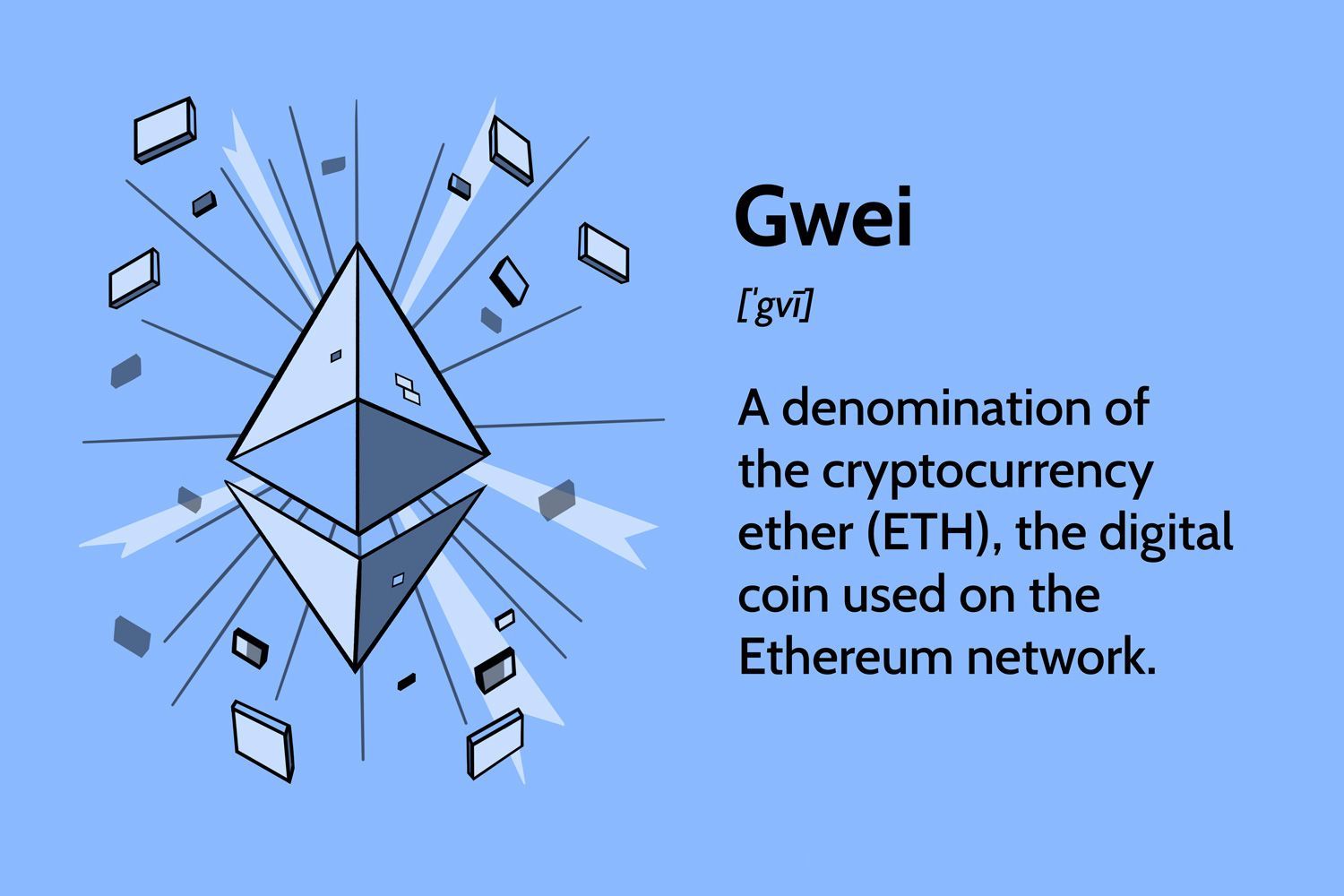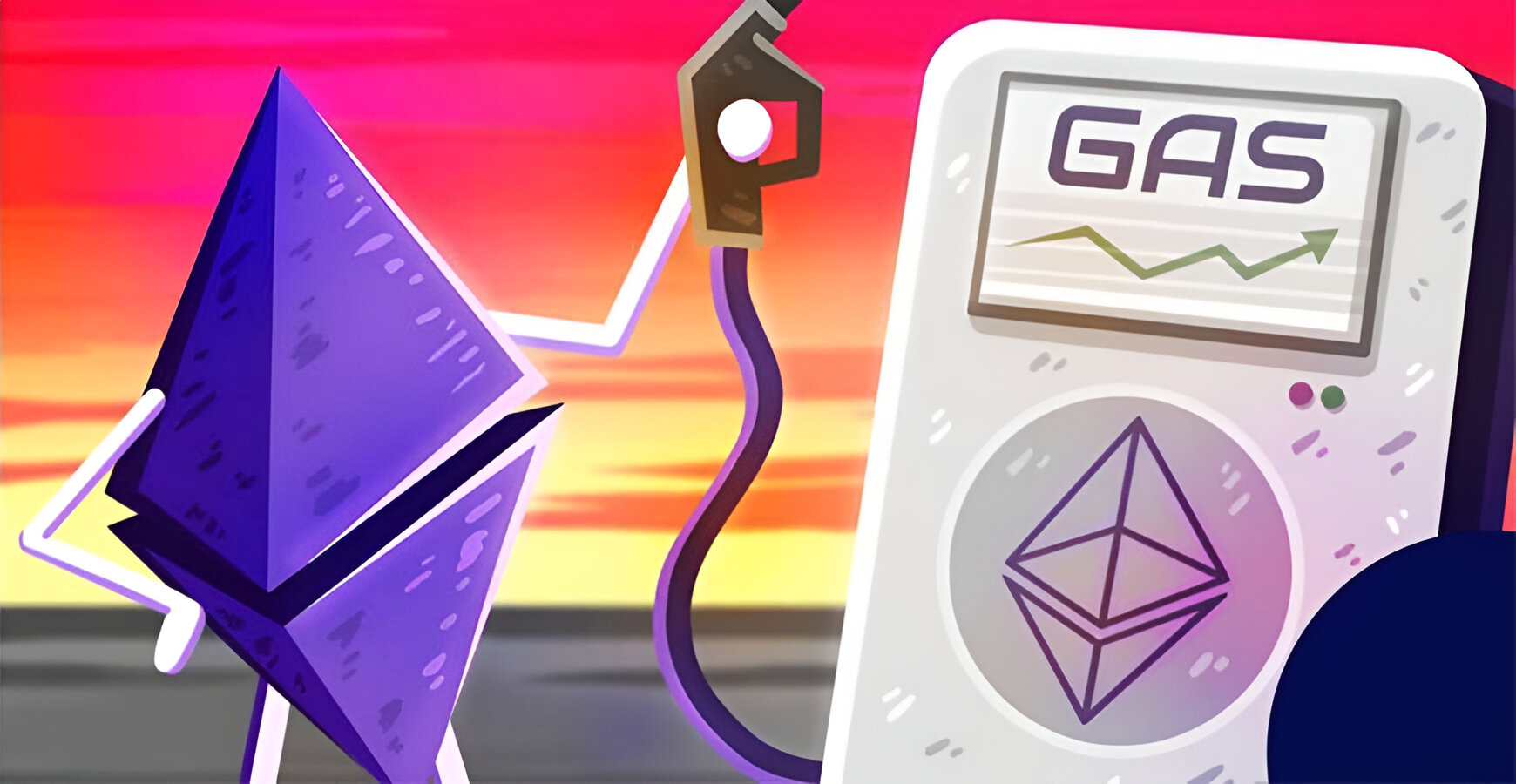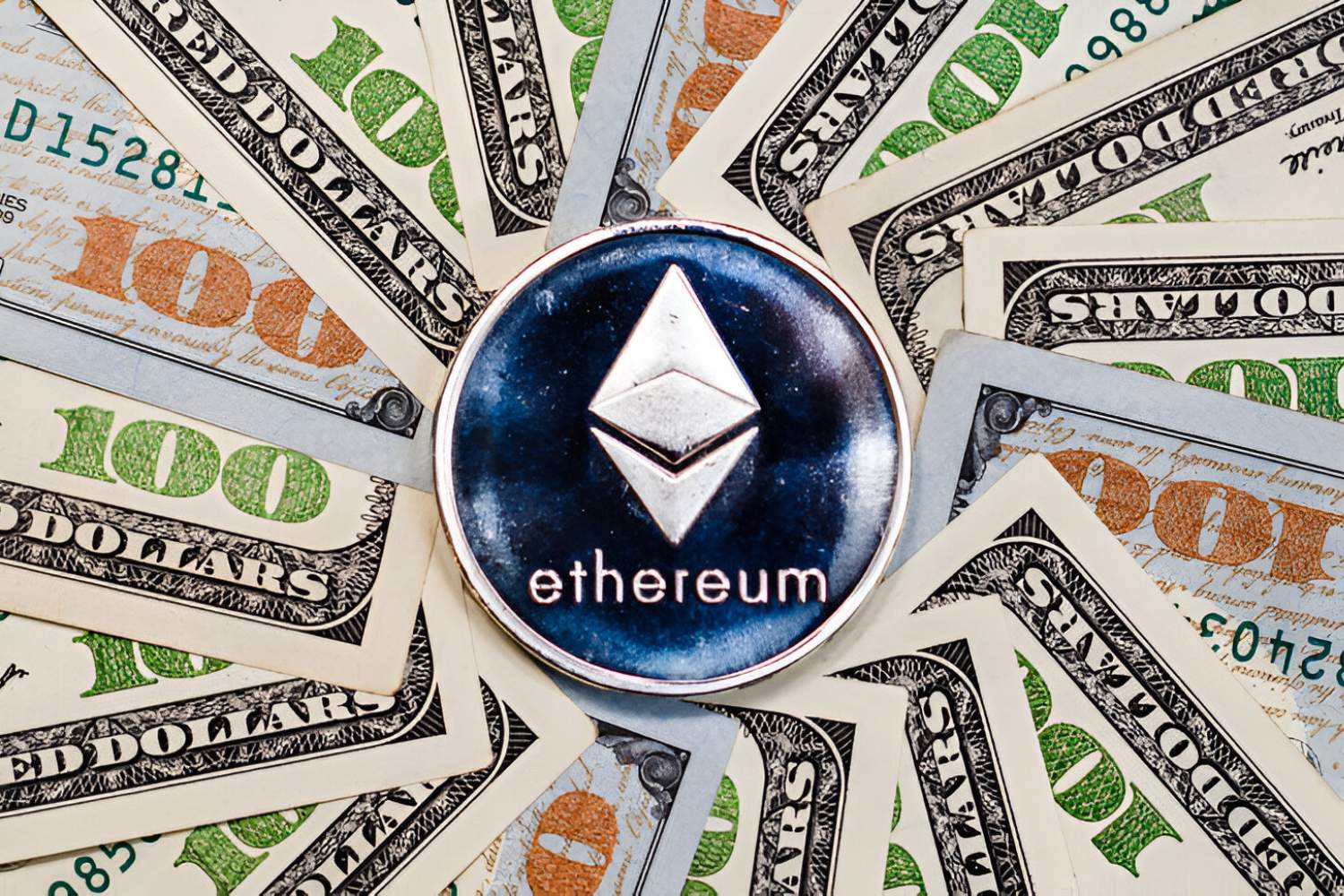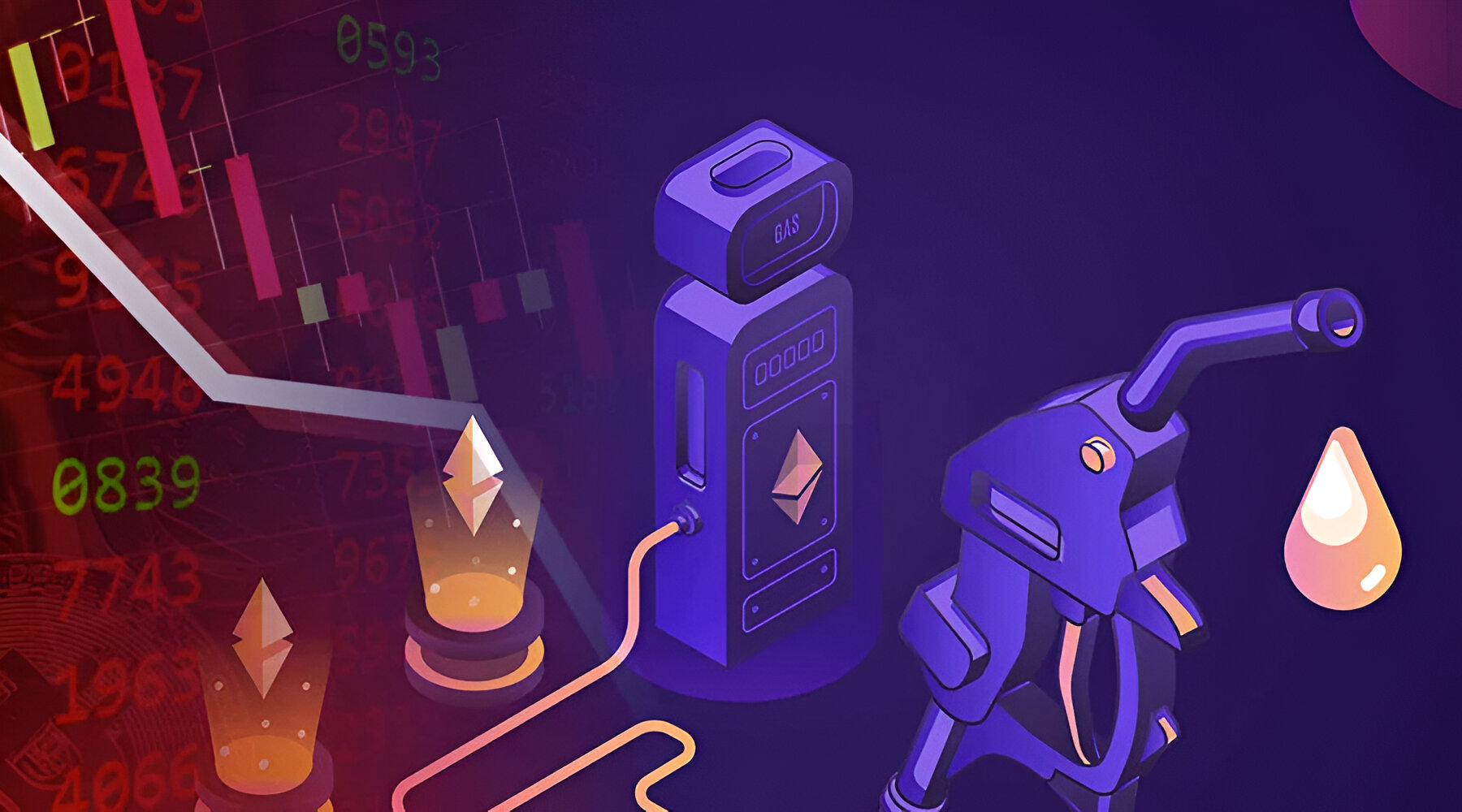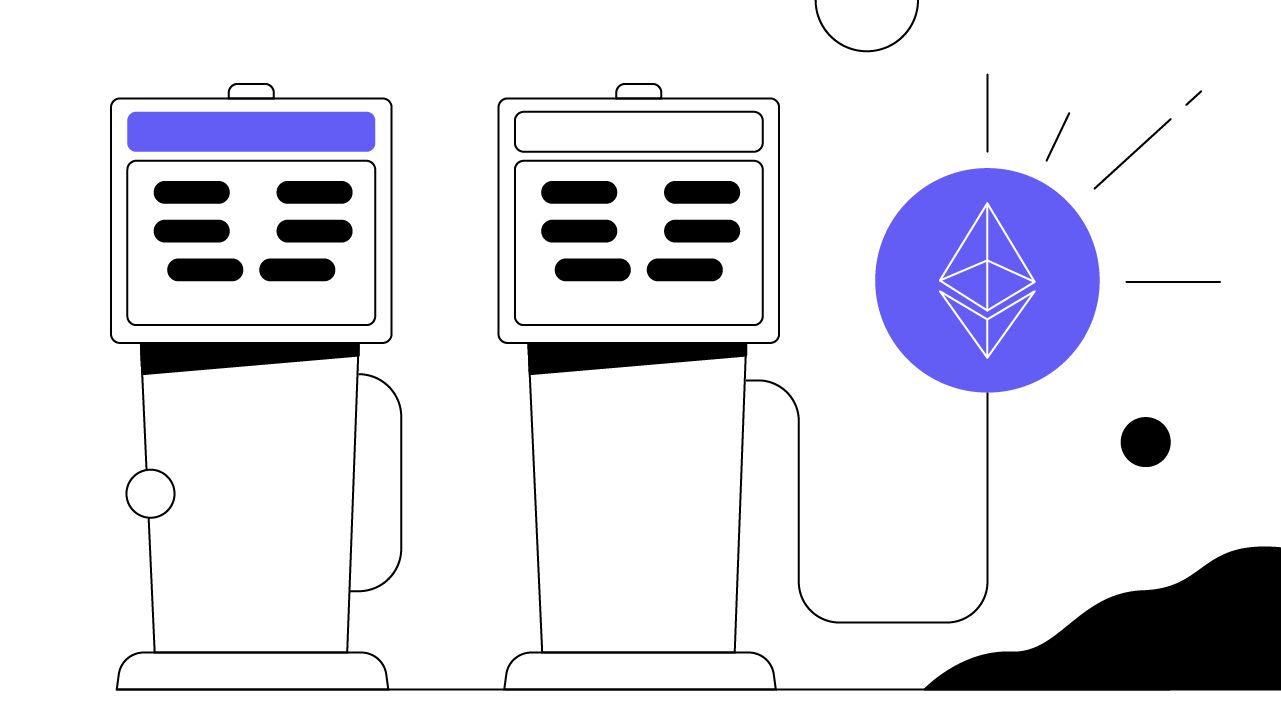Introduction
Welcome to the world of cryptocurrency, where complex terms and concepts often come into play. One such term you might have come across is “Gwei.” If you’re new to the crypto space, you might be wondering what Gwei is and why it’s important. This article aims to demystify Gwei and shed light on its role in the world of digital currencies.
Gwei, short for Gigawei, is a unit of measurement used in the Ethereum blockchain. It is a denomination of the cryptocurrency Ether, which is the native token of the Ethereum network. While Ethereum operates on its own blockchain, Gwei plays a crucial role in determining transaction fees and facilitating the smooth functioning of the network.
Understanding Gwei requires a bit of knowledge about the Ethereum blockchain and how it differs from traditional financial systems. Unlike traditional banking systems, Ethereum operates on a decentralized platform, where transactions are verified and recorded by a network of computers called nodes. These nodes are distributed globally, ensuring transparency and security in the blockchain.
One of the key components of the Ethereum blockchain is the concept of “gas.” Gas represents the computational power required to execute transactions and smart contracts on the network. Each operation on the Ethereum blockchain consumes a certain amount of gas, and users must pay for this gas in Ether. That’s where Gwei comes in.
Gwei is a unit of gas price, determining the amount of Ether required to execute a transaction or perform an operation on the Ethereum network. It’s important because it directly influences the transaction fee, which is used to incentivize miners to include transactions in blocks and secure the network.
The concept of Gwei was introduced to simplify transaction fees, as Ether itself can have a high value, making calculations inconvenient. By using Gwei, users can express the cost of gas in smaller units, making it easier to estimate transaction fees accurately.
In the next sections, we’ll delve deeper into the history of Gwei, its importance in the world of cryptocurrency, and how it functions within the Ethereum blockchain.
What is Gwei?
Gwei, short for Gigawei, is a unit of measurement used in the Ethereum blockchain. It is a denomination of the cryptocurrency Ether and plays a crucial role in the functioning of the Ethereum network.
To understand Gwei, let’s first dive into the concept of gas. Gas is the computational power required to execute transactions and smart contracts on the Ethereum network. Every operation on the Ethereum blockchain consumes a certain amount of gas. For example, sending Ether from one wallet to another, deploying a smart contract, or calling a function within a contract all require gas.
When a user initiates a transaction or performs an operation on the Ethereum network, they must set a gas price. This gas price, expressed in Gwei, determines the amount of Ether the user is willing to pay for each unit of gas consumed. Miners, who validate and include transactions in blocks, prioritize transactions with higher gas prices because they are incentivized to earn more Ether.
For example, if a user sets a gas price of 20 Gwei, they are willing to pay 20 Gigawei (0.000000020 Ether) for each unit of gas consumed. The higher the gas price, the faster the transaction is likely to be processed.
Gwei is used as a more convenient denomination for gas prices, as Ether itself can have a high value. Breaking down the gas price into smaller units like Gwei makes it easier for users to estimate transaction fees accurately.
Moreover, Gwei allows for more granular control over transaction fees. Users can choose a higher gas price during times of network congestion to ensure their transactions are processed quickly, or opt for a lower gas price during periods of low network activity to save on transaction fees.
It’s important to note that the value of Gwei fluctuates depending on market conditions and network demand. During periods of high network congestion, gas prices tend to increase, driving up the value of Gwei as users compete for limited network resources.
In the next section, we’ll explore the history of Gwei and how it has evolved alongside the growth of the Ethereum network.
History of Gwei
The concept of Gwei originated with the launch of the Ethereum network in 2015. Ethereum was created by Vitalik Buterin, a Canadian-Russian programmer, with the goal of building a decentralized platform for executing smart contracts.
When Ethereum was first introduced, gas prices were originally denominated in Ether itself. However, as the value of Ether increased significantly over time, it became inconvenient to express gas prices in such large units. In response to this issue, Gwei was introduced as a smaller denomination of gas prices, making it easier for users to calculate transaction fees more accurately.
Since its inception, the value of Gwei has fluctuated along with the volatility of the cryptocurrency market. In the early days of Ethereum, gas prices and Gwei values were relatively low due to the lower adoption and network activity. However, as Ethereum gained popularity and usage increased, the demand for transactions grew, causing gas prices to rise and the value of Gwei to follow suit.
As the Ethereum network evolved, various improvements and upgrades were introduced. These included the implementation of the EIP-1559 proposal in August 2021, which aimed to improve the user experience and reduce transaction fees. EIP-1559 introduced a new mechanism for calculating transaction fees, incorporating a base fee that is burnt from the supply of Ether. The miner’s tip, expressed in Gwei, is added on top of the base fee.
With the implementation of EIP-1559, the concept of gas prices and Gwei became even more important. Users now have the option to set a maximum fee, indicating the maximum amount they are willing to pay, while the actual fee is determined by the network based on supply and demand dynamics. This change aimed to make gas fees more predictable and reduce the impact of extreme spikes in gas prices during periods of high demand.
Overall, the history of Gwei is closely intertwined with the development and growth of the Ethereum network. It has evolved as a solution to the challenges posed by expressing gas prices in large units of Ether, and continues to play a crucial role in facilitating transactions and operations on the Ethereum blockchain.
In the next section, we will explore the importance of Gwei in the world of cryptocurrency and its specific role within the Ethereum ecosystem.
Why is Gwei important in cryptocurrency?
Gwei holds significant importance in the world of cryptocurrency, particularly in the Ethereum ecosystem. Here are several reasons why Gwei is crucial:
Determining Transaction Fees: One of the primary roles of Gwei is to determine the transaction fees in the Ethereum network. By setting a gas price in Gwei, users can decide how much Ether they are willing to pay for each unit of gas consumed in their transactions. This feature allows users to have control over the cost and speed of their transactions, as higher gas prices incentivize miners to prioritize their transactions and include them in the blockchain more quickly.
Evaluating Network Demand: The value of Gwei serves as a useful metric for understanding network congestion and demand. During periods of high network activity, the gas prices in Gwei tend to increase, reflecting the increased competition for limited network resources. Monitoring the value of Gwei can help users gauge the optimal gas price to ensure speedy transaction processing, especially when the network is congested.
Ensuring Network Security: Gwei plays a vital role in maintaining the security of the Ethereum network. Miners, who validate and include transactions in blocks, are incentivized to prioritize transactions with higher gas prices. This incentivization ensures that miners actively participate in securing the network by processing transactions and maintaining the integrity of the blockchain. Without Gwei, the transaction prioritization mechanism might be less effective, potentially compromising the security of the network.
Granular Control of Transaction Fees: Gwei allows users to have fine-grained control over their transaction fees. By adjusting the gas price in Gwei, users can choose between faster transaction processing or more cost-effective fees. During times of network congestion, users might opt to increase the gas price in Gwei to ensure their transaction is processed promptly. Conversely, during periods of lower network activity, users can choose lower gas prices in Gwei to save on transaction fees.
Standardization and Simplicity: Gwei provides a standardized and simplified method for users to express gas prices. Instead of having to calculate fees in large units of Ether, users can use Gwei to express the cost of gas in smaller, more manageable units. This simplification allows for easier estimation and comparison of transaction fees across different wallets and services, providing a more user-friendly experience.
In summary, Gwei holds a critical role in the cryptocurrency space, particularly within the Ethereum ecosystem. It determines transaction fees, reflects network demand, ensures network security, enables granular control of fees, and simplifies the expression of gas prices. Understanding Gwei is essential for navigating the Ethereum network and optimizing transaction processing.
How does Gwei work?
Gwei, as a unit of measurement, functions within the Ethereum network to determine the cost of gas and transaction fees. To understand how Gwei works, let’s break it down into several key aspects:
Gas Price: Gwei is used to express the gas price, which represents the amount of Ether a user is willing to pay for each unit of gas consumed in a transaction or operation. Gas prices can be set by users when initiating a transaction, indicating the maximum fee they are willing to pay.
Transactions and Operations: Each transaction or operation on the Ethereum network consumes a specific amount of gas, which represents the computational work required to execute the task. For example, sending Ether, deploying a smart contract, or calling a function within a contract all require gas.
Calculating the Fee: To calculate the fee for a particular transaction or operation, the gas amount is multiplied by the gas price, expressed in Gwei. For instance, if a transaction consumes 50,000 units of gas and the gas price is set at 20 Gwei, the total fee would be 50,000 * 20 Gwei = 1,000,000 Gwei (0.001 Ether).
Transaction Prioritization: Miners, who validate and include transactions in blocks, prioritize transactions based on the gas price. Higher gas prices incentivize miners to prioritize those transactions, as they have the potential to earn more Ether by including them in the blockchain. This mechanism ensures a fair and efficient processing of transactions within the Ethereum network.
Network Demand: The value of Gwei is influenced by network demand. During times of high network congestion, when there’s a significant number of pending transactions, the value of Gwei tends to rise as users compete to have their transactions processed quickly. Monitoring the value of Gwei can help users determine an appropriate gas price based on the network conditions.
Gas Limit: Each block in the Ethereum network has a maximum limit on the total amount of gas that can be consumed by all transactions within that block. This gas limit is designed to prevent potential network overload and ensure the stability of the blockchain. If a transaction exceeds the gas limit, it will fail and the gas fee will be lost.
Calculating Total Transaction Fee: The total transaction fee comprises two components: the gas fee and the miner’s tip. The gas fee is calculated based on gas consumed and the gas price in Gwei, while the miner’s tip is an additional amount offered to incentivize miners to prioritize the transaction. The total fee is the sum of the gas fee and the tip.
In summary, Gwei works by determining the price of gas consumed in each transaction or operation on the Ethereum network. By setting the gas price in Gwei, users can control the transaction fee and influence the prioritization of their transactions. Monitoring the value of Gwei and considering network demand are essential for optimizing transactions on the Ethereum network.
Factors affecting Gwei
Several factors can influence the value of Gwei, which in turn affects the gas prices and transaction fees within the Ethereum network. Understanding these factors is crucial for navigating the dynamic landscape of Gwei. Here are the key factors that can influence Gwei:
Network Congestion: High network congestion occurs when there are more transactions waiting to be processed than the network can handle efficiently. During periods of congestion, users have to compete by offering higher gas prices in Gwei to incentivize miners to prioritize their transactions. As a result, the value of Gwei tends to increase during peak network demand.
Gas Limit: Each block in the Ethereum network has a predefined gas limit, which determines the maximum amount of gas that can be consumed within that block. When the gas limit is reached, transactions that have not been included in a block are delayed and may need to be resubmitted with higher gas prices in order to be processed. This can lead to fluctuations in the value of Gwei as users adjust their gas prices to compete for limited network resources.
Market Conditions: The overall market conditions within the cryptocurrency space can impact the value of Gwei. Factors such as investor sentiment, market speculation, and the demand for Ethereum can influence the value of Ether, which in turn affects the value of Gwei. During periods of high market activity and increased demand for Ether, the value of Gwei may rise as users compete for limited resources.
Ethereum Network Upgrades: Upgrades and improvements introduced to the Ethereum network can impact the value of Gwei. For example, the implementation of EIP-1559 in August 2021 aimed to improve the user experience by introducing a base fee mechanism and a more predictable fee structure. Such upgrades can influence the supply and demand dynamics of gas prices, which may have an impact on the value of Gwei.
User Behavior: User behavior and preferences can also influence the value of Gwei. When users have a higher urgency to complete transactions quickly, they may be willing to pay higher gas prices in Gwei to ensure faster processing. On the other hand, during periods of low network activity, users may opt for lower gas prices in order to save on transaction fees. User behavior collectively contributes to the value of Gwei in the Ethereum network.
Smart Contract Activity: The level of activity within smart contracts can impact the value of Gwei. Smart contracts require gas to execute transactions and perform operations, and increased smart contract activity can lead to higher gas prices. As more complex and resource-intensive transactions are executed within smart contracts, the demand for gas increases, which can influence the value of Gwei.
In summary, several factors, including network congestion, the gas limit, market conditions, Ethereum network upgrades, user behavior, and smart contract activity, can influence the value of Gwei. These factors collectively shape the gas prices and transaction fees within the Ethereum network, necessitating users to adapt and adjust their gas prices in response to changing network conditions.
Gwei vs Gas
When discussing the Ethereum blockchain and transaction fees, two terms frequently come up: Gwei and gas. While they are closely related, Gwei and gas are distinct concepts in the Ethereum ecosystem. Let’s explore the difference between Gwei and gas:
Gwei: Gwei, short for Gigawei, is a unit of measurement used to express gas prices within the Ethereum network. It represents the amount of Ether a user is willing to pay for each unit of gas consumed in a transaction or operation. Gwei provides a more convenient and user-friendly way to express gas prices, as Ether itself can have a high value. By using Gwei, users can easily estimate and compare transaction fees across different operations and wallets.
Gas: Gas, on the other hand, represents the computational work required to execute a transaction or operation on the Ethereum network. Each operation, whether it is simply sending Ether or executing a complex smart contract, consumes a specific amount of gas. Gas is a crucial concept in Ethereum, as it ensures that the network operates smoothly and securely. The cost of gas is measured in Ether, but it is often expressed in smaller units like Gwei for ease of calculation and comparison.
In summary, Gwei is the unit of measurement used to express the price of gas, while gas represents the computational work required to execute transactions and operations on the Ethereum network. Gwei simplifies the expression of gas prices, making it easier for users to estimate transaction fees accurately. Gas, on the other hand, determines the cost of executing transactions and helps incentivize miners to prioritize transactions within the Ethereum network.
Understanding the difference between Gwei and gas is essential for navigating the Ethereum ecosystem and optimizing transaction fees. By setting the appropriate gas price in Gwei, users can control the cost and speed of their transactions, ensuring that their interactions with the Ethereum network are efficient and cost-effective.
Gwei in Ethereum
Gwei plays a fundamental role within the Ethereum blockchain, serving as a unit of measurement for gas prices and transaction fees. Understanding Gwei in the context of Ethereum is crucial for effectively navigating the network. Here are some key aspects of Gwei in Ethereum:
Gas Price and Transaction Fees: Gwei is used to express the gas price, determining the cost of gas consumption for each unit of work performed on the Ethereum network. When initiating a transaction or executing an operation, users can set a gas price in Gwei, indicating the maximum fee they are willing to pay. The gas price, multiplied by the amount of gas consumed, determines the transaction fee, which incentivizes miners to validate and include transactions in the blockchain.
Transaction Prioritization: Miners, who validate and include transactions in blocks, prioritize transactions based on their gas prices. Transactions with higher gas prices, denominated in Gwei, have a greater chance of being processed quickly and included in the blockchain. This mechanism encourages users to set competitive gas prices to ensure prompt transaction processing, especially during periods of high network activity.
Network Congestion: During times of high network congestion, when the number of pending transactions exceeds the network’s capacity, gas prices in Gwei tend to increase. Users must offer higher gas prices to compete for limited resources, ensuring that their transactions are included in blocks. Monitoring the value of Gwei can help users adjust their gas prices to navigate network congestion and avoid delays in transaction processing.
Estimating Transaction Fees: Gwei provides a simplified and standardized way to estimate transaction fees in Ether. By using Gwei as a smaller unit of measurement, users can easily calculate the cost of gas and accurately estimate the transaction fees associated with their operations. This granularity allows for more precise planning and budgeting when conducting transactions on the Ethereum network.
User Control: Gwei gives users control over their transaction fees and the speed of their transactions. By setting higher gas prices in Gwei, users can increase the chances of their transactions being processed quickly by miners. Conversely, during periods of low network activity, users can opt for lower gas prices in Gwei to reduce transaction fees. This flexibility allows users to make cost-effective decisions based on their specific needs and network conditions.
In summary, Gwei is an integral part of the Ethereum blockchain, enabling users to set gas prices and determine transaction fees. It provides a standardized and user-friendly way to express the cost of gas consumption within the network. Gwei empowers users to navigate network congestion, estimate transaction fees accurately, and have control over the speed and cost of their transactions on the Ethereum blockchain.
Gwei in Other Cryptocurrencies
While Gwei is primarily associated with the Ethereum blockchain, similar concepts of gas prices and transaction fees exist in other cryptocurrencies as well. However, the terminology and units may vary depending on the blockchain and its underlying protocol. Here are some examples of how gas prices or fee structures work in other cryptocurrencies:
Bitcoin and Satoshi: In the Bitcoin network, the smallest unit of measurement is called a satoshi, named after the pseudonymous creator of Bitcoin, Satoshi Nakamoto. Similar to Gwei, satoshi allows for finer granularity in expressing transaction values. The transaction fee in the Bitcoin network is typically denominated in satoshis per byte, representing the amount users are willing to pay for each byte of data in their transaction.
NEO and GAS: NEO, often referred to as the “Chinese Ethereum,” has a native cryptocurrency called GAS. GAS serves as the fuel for the NEO blockchain, used to execute smart contracts and interact with decentralized applications (dApps). In the NEO ecosystem, the GAS price is determined by a decentralized mechanism and can vary depending on network demand and consensus rules.
Binance Smart Chain and BNB: Binance Smart Chain (BSC), a parallel blockchain to Binance Chain, uses Binance Coin (BNB) as its native cryptocurrency. BNB is used to pay for transaction fees and various network operations within the BSC ecosystem. Gas prices on BSC are denominated in gwei, similar to the Ethereum network, providing a familiar concept for users transitioning from Ethereum to BSC.
Cardano and Lovelace: Cardano, a blockchain platform known for its focus on security and sustainability, uses a distinct fee structure. The transaction fees on Cardano are calculated based on the size of the transaction in bytes and the complexity of the operations performed. Transaction fees are paid in Ada, the native cryptocurrency of the Cardano network, and the smallest unit is called a lovelace.
Terra and Luna: Terra, a blockchain platform designed for stablecoin issuance, uses Luna as its native cryptocurrency. Similar to other networks, Terra employs gas fees for transaction processing. The gas fees within the Terra ecosystem are denominated in micro-LUNA, representing fractions of a whole Luna token.
These examples highlight that while Gwei is specific to the Ethereum network, other cryptocurrencies have their own systems for determining gas prices or transaction fees. Each blockchain may have its unique units or measurements. Nonetheless, the underlying principles remain the same—users pay fees to incentivize network participants for processing transactions and ensuring the functionality of decentralized networks.
It’s important for users to familiarize themselves with the specific fee structures of different cryptocurrencies and understand the units used to express gas prices. This knowledge enables users to make informed decisions and optimize transaction costs when engaging with various blockchain ecosystems.
Gwei and Transaction Fees
Gwei plays a crucial role in determining transaction fees within the Ethereum network. By setting the gas price in Gwei, users can control the cost of their transactions and incentivize miners to prioritize their transactions for processing. Here’s how Gwei relates to transaction fees:
Gas Price and Transaction Fees: The gas price, expressed in Gwei, determines the cost users are willing to pay for each unit of gas consumed in their transactions within the Ethereum network. The higher the gas price, the more attractive the transaction becomes to miners, as they have the potential to earn more Ether by including the transaction in a block. The transaction fee consists of the gas fee, calculated by multiplying the gas consumed by the gas price in Gwei.
Transaction Processing Speed: Setting a higher gas price in Gwei increases the chances of transaction inclusion in the next block, as miners are incentivized to prioritize transactions with higher gas prices. By adjusting the gas price, users can influence the speed at which their transactions are processed within the Ethereum network. During times of network congestion, setting a higher gas price in Gwei can help ensure faster transaction confirmation, minimizing delays.
Network Demand and Gas Prices: Gas prices, typically expressed in Gwei, reflect the supply and demand dynamics within the Ethereum network. When network activity increases, gas prices tend to rise as users compete to have their transactions processed quickly. Users must keep an eye on gas prices in Gwei and adjust their gas prices accordingly to navigate periods of high network congestion. Monitoring gas prices ensures that users pay an appropriate fee relative to the prevailing network conditions.
Estimating and Comparing Transaction Fees: Gwei provides a standardized unit of measurement that simplifies the estimation and comparison of transaction fees within the Ethereum network. By expressing gas prices in Gwei, users can accurately calculate and assess the fees associated with their transactions. This simplification facilitates cost-effective decision-making and helps users optimize their transaction fees based on their specific needs and budget constraints.
Flexibility and Granularity: Gwei allows users to have fine-grained control over their transaction fees. Users can adjust the gas price in Gwei to customize the balance between transaction speed and cost. During periods of high network activity, users might choose a higher gas price to ensure prompt processing, while during periods of low network congestion, users might opt for lower gas prices to save on fees. This flexibility empowers users to tailor their transaction fees according to individual preferences and network conditions.
In summary, Gwei plays a vital role in determining transaction fees within the Ethereum network. By setting the gas price in Gwei, users can influence the cost and speed of their transactions. Monitoring gas prices in Gwei allows users to estimate fees accurately, navigate network congestion, and optimize transaction costs based on their specific requirements.
Conclusion
Gwei holds significant importance within the world of cryptocurrency, particularly in the Ethereum ecosystem. It serves as a unit of measurement for gas prices, allowing users to determine the cost of gas consumed in their transactions and operations. By setting the gas price in Gwei, users can control transaction fees, incentivize miners, and influence the speed at which their transactions are processed.
Understanding Gwei is crucial for navigating the Ethereum network and optimizing transaction costs. It provides a standardized and user-friendly way to express gas prices, simplifying the estimation and comparison of transaction fees. Monitoring the value of Gwei enables users to adapt to changing network conditions and adjust their gas prices accordingly.
Gwei is not limited to Ethereum alone. Other cryptocurrencies have their own systems for determining gas prices or transaction fees, often denominated in different units. Concepts similar to Gwei exist in various blockchain ecosystems, allowing users to control transaction costs and navigate network congestion.
Whether you’re an Ethereum user or exploring other cryptocurrencies, understanding the role of Gwei and its relationship with transaction fees is essential. It empowers you to make informed decisions, optimize transaction costs, and navigate the ever-evolving landscape of decentralized networks.
As the cryptocurrency space continues to evolve and new technologies emerge, it’s important to stay up to date with developments surrounding Gwei and transaction fees. This knowledge equips you with the tools to make cost-effective transactions and navigate the complexities of decentralized networks with confidence.









